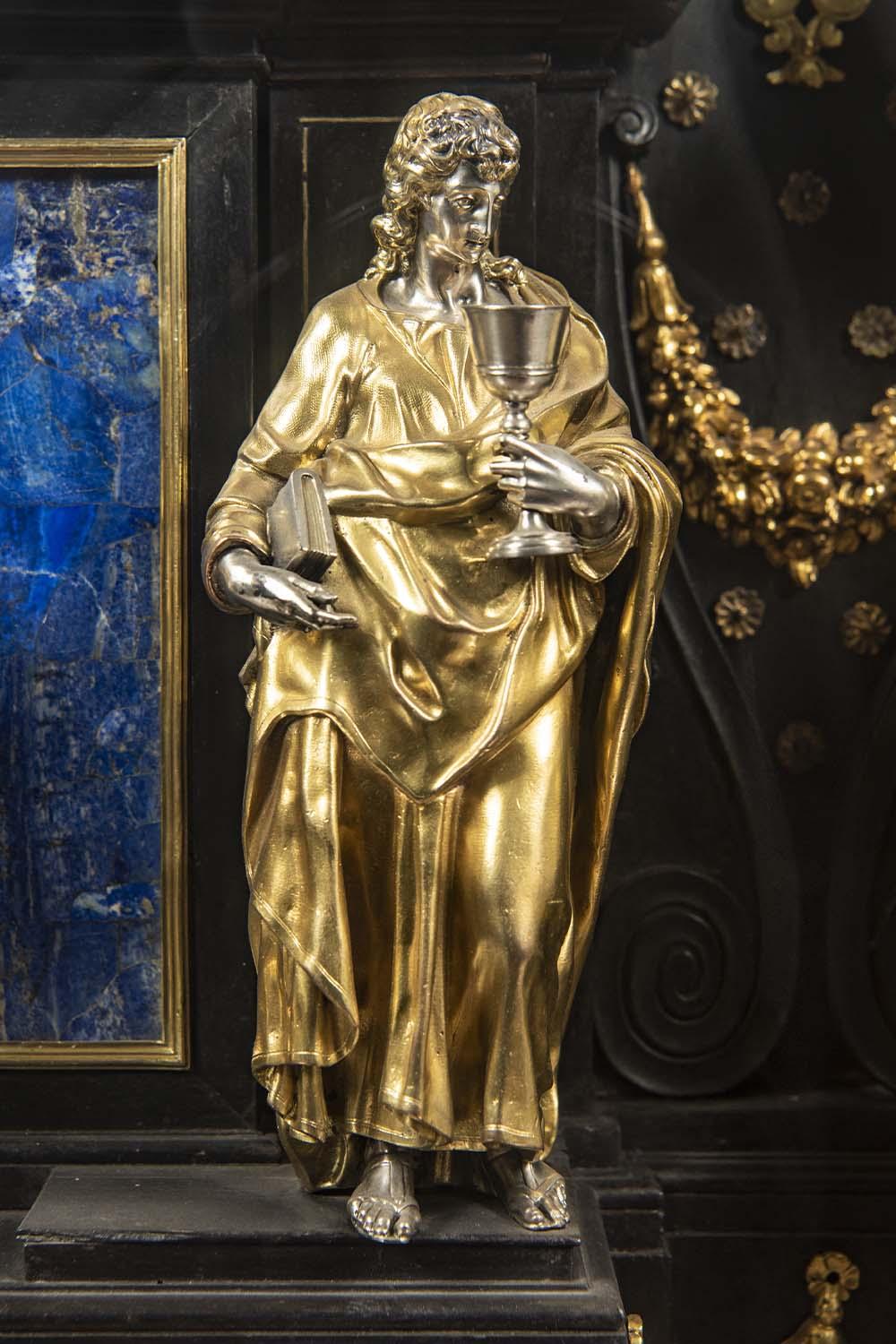The portable altar by Jacob Cobaert with the Crucifix from the atelier of Gian Lorenzo Bernini
An elaborate late-16th-century creation, altered a little less than a century later by a crowning element in the style of Bernini
The portable altar, exhibited in the Altoviti Room, is a composite work, extremely sophisticated and precious. British art historian Jennifer Montagu has identified two distinct phases of its realisation. Leading the first phase was Flemish sculptor Jacob Cornelisz Cobaert (1535-1615). In fact, Cobaert made most of the piece, the pieces in gold- and silver-plated wood, the lapis lazuli panels and the 20 statuettes in gilded bronze. The latter are quite similar to those that Cobaert made between 1587 and 1582 for the chapel of Cardinal Mathieu Cointrel in the Church of Saint Louis of the French, just a few hundred meters away.
Cobaert also made an initial Crucifix that is now lost. Later on, in the mid-to-late 17th century, an artist from the workshop of Gian Lorenzo Bernini replaced it with the current cross. This element can stylistically be compared to one of the two models that, prepared by Bernini for the altars of Saint Peter’s Basilica, were executed by Ercole Ferrata in 1658 and 1659, and cast by Paolo Guarnieri in 1661.
In 2004, the portable altar was on the London art market, at the Jean Luc Baroni art gallery: thanks to the purchase by the Italian State the masterpiece was then placed in Palazzo Venezia.













